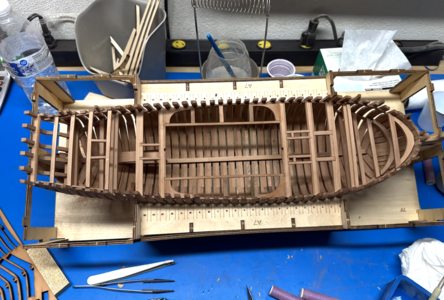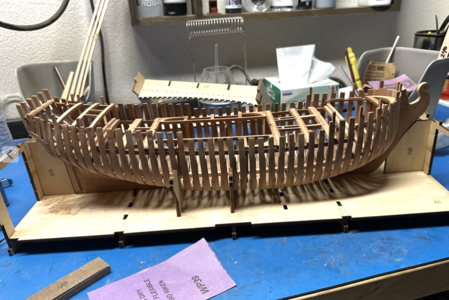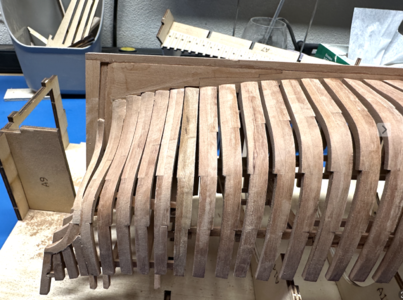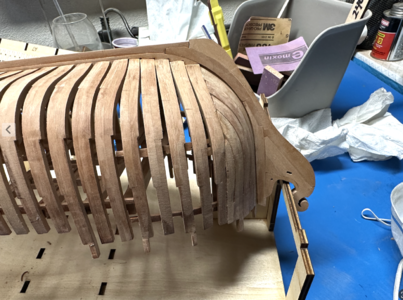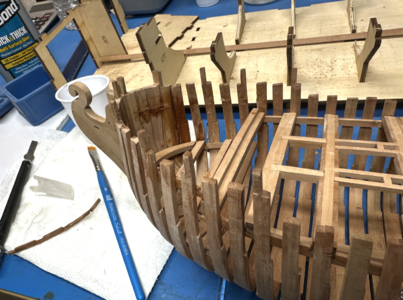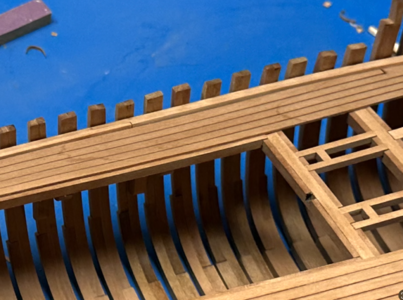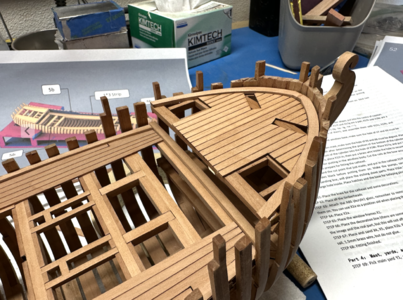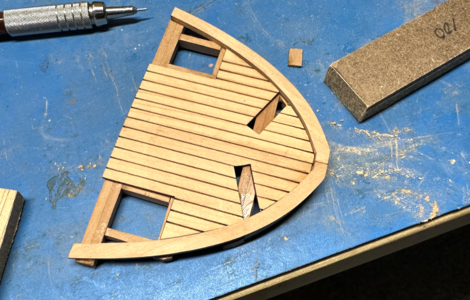Now on to more. I finally settled those last hawse pieces, now that the forward hull is better secured with clamps and i've removed part of the jig that gives me more access to the bow.
I have to admit, I didn't really think it was going to come together but now I think it looks pretty good.
Here's the starboard piece fitted after shaping it as much as I dared on it's own. Port is the piece on that side shaped into place.
View attachment 393638
And now my near final bow.
View attachment 393639
I still plan to pop it out of the jig at some point and better fair and fine sand the frames.
I have to say, I am proud of the work I did on the hull, but pre-bevelling the frames isn't great. I think of this because now you can start to see better that each was shaped individually. Also, it's difficult to bevel the frames with strictly flat curves, especially with my Dremel setup. Most surfaces of the bevels have a slight rounding to them. Fortunately, overall, they aren't too far from fair and will be plankable with a little more work. Finally, after shaping the hawse pieces in place, the fairing of the un-bevelled frames seems time consuming but doable and for a much better look. In a future POF kit, I'll look for something I can fair later. Although I'm not looking forward to the inside. I sanded off some skin on my finger trying to get in there and fair a little more before I installed the keelson. I made a tool on the 3D printer that helped, but I do understand the moaning in build logs when builders get to fairing frames. It could take most of the time it did to build the frames in the first place.





